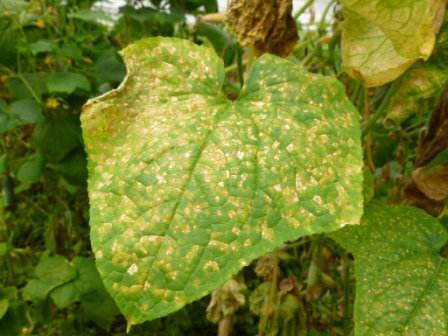 Today we have an important topic - cucumber diseases, leaf photos, treatment. It is very important to understand which conditions are fatal for cucumbers, which will lead to a good harvest, what needs to be done with the appearance of certain signs, and what preventive measures will save our crop, and will not allow cucumbers to disappear.
Today we have an important topic - cucumber diseases, leaf photos, treatment. It is very important to understand which conditions are fatal for cucumbers, which will lead to a good harvest, what needs to be done with the appearance of certain signs, and what preventive measures will save our crop, and will not allow cucumbers to disappear.
But you won’t be full of cucumbers alone, look: planting potatoes under straw - Tomathouse.com.
Powdery mildew
Perhaps the most famous type of disease of cucumbers, which are exposed to greenhouse plants. Initially, a white coating appears on the lower side of the leaves, then the tops of the leaves are affected by white spots, then they darken, the leaves fall and the plant dies.
How to fight: as soon as they saw that there were signs of powdery mildew, immediately remove the affected sheets. In order not to use chemistry, you can get by with folk remedies - make an infusion of marigolds (many gardeners specially plant these flowers with the first rays of the warm sun, they also repel many pests), horsetail is also good if the disease began to appear.
If you already launched the powdery mildew into your cucumber thickets, you will have to resort to more effective drugs: Topaz, Paracelsus, Switch and Horus will also show themselves effectively. For prophylaxis, it is good to use phosphorus with potassium, which will strengthen the plants, pre-treat with Trichodermin, and you can also use the PhytoDoctor. With such measures your cucumbers will definitely not be afraid of this formidable disease of cucumbers.
Also, for the prevention of many diseases, our readers are advised to use plant growth activatorthanks to which plants are protected from bad fluoride.
Downy mildew
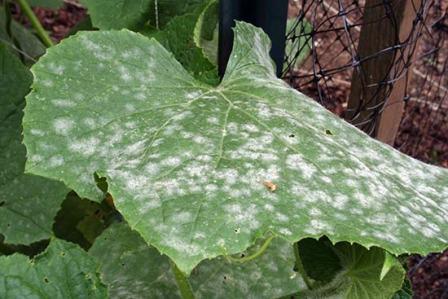
No less serious enemy of your cucumbers - yellow spots appear on the leaves quite often, turning over time into a purple coating. Then the foliage begins to spin up, dries, and dies.
Causes of occurrence:
- causative agents of sores could well remain on wintering residues,
- also sharp temperature changes contribute to this disease, low daytime temperature, below 20 degrees.
- crop rotation disruption - cucumbers need to be replaced by plots, returning them to their original place only after 4 years.
Prevention: regularly inspect the cucumber lashes, and, having noticed the disease, immediately proceed with measures. In this case, copper-containing preparations and furgicides are used. Use the Quadrice as the last, Aliette helps well, and you can also use Ridomil Gold and Topsin.
Treatment:
• if powdery mildew has overtaken in the greenhouse, the best measures are to raise the temperature to 20 and above, remove excess moisture, and do not water it with cold water. By the way, cold watering leads to many more diseases.
• Mix 2ml Topaz in a bucket of water and sprinkle the cucumbers.
• Pour 40gr of HOM into a bucket of water, stir and spray the cucumber lashes.
Folk methods of controlling powdery mildew in a greenhouse:
- Mullein infusion: 1kg / 3D of water, for 24 hours, pour 3 liters of water, spray the plants.
- pour a liter of milk into a liter of water, strain, spray.
- mix 50g of soda and laundry soap, pour into a bucket of water, spray. All these measures need to be repeated once a week until a sustainable result.
After harvesting, without fail, disinfect in the greenhouses both soil and walls. Be sure to warm and disinfect the seeds before planting, because often the disease is brought in with the seeds.
See also: growing cucumbers in the open field in the suburbs.
Bacteriosis
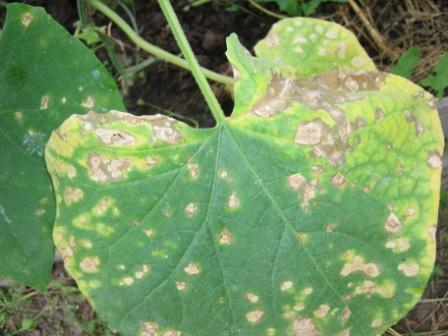
This disease is also called angular spotting, because it affects the corners precisely, becoming covered with an oily bloom.Most often in greenhouses, this disease affects cucumbers, the fruits can bend, and hide under ulcers.
Preventive measures: mandatory soil renewal, the purchase of healthy seeds and / or their disinfection, can be treated with a Bordeaux mixture, one percent composition.
Gray rot
When it’s 17 degrees or less in the street or in the greenhouse, when the humidity is high, planting is thickened, and you pour the cold water over the cucumbers, then gray rot begins to rage on the cucumbers. A kind of unpleasant gray coating appears on the stems, slippery and nasty, and urgent measures must be taken.
- cut off all areas on which gray rot has already settled
- cut the lashes, hang them less often, avoiding thickening, and apply (if these measures do not help) the drug Switch.
White rot
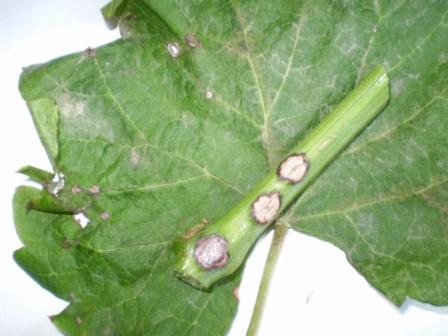
Cucumbers are affected by it mainly in greenhouses. This is a fungus that begins to appear with white mycelium spots on the foliage, then darkens, the cucumbers themselves become watery and unpleasant in the body.
Treatment: Trichodermin, Switch, you can also use Rovral and Sumileks.
Ordinary mosaic
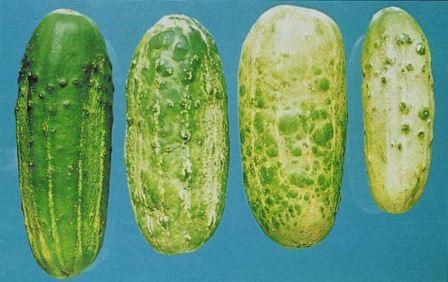
Subject to it are cucumbers grown just in open ground, where there are many ants and, accordingly, aphids, the juice of which they feed. And aphids often endure mosaic. She can also sit quietly in weeds in the winter.
The first signs are already evident in seedlings in the form of mosaic leaves, curvature and wrinkling. On adult plants, warts appear on the foliage, colorful spots on the fruits, cucumbers bend.
Prevention: crop rotation, timely removal of weeds and cut lashes, leaves. It is better to choose varieties resistant to mosaics, such as Pasadena or Othello.
White mosaic
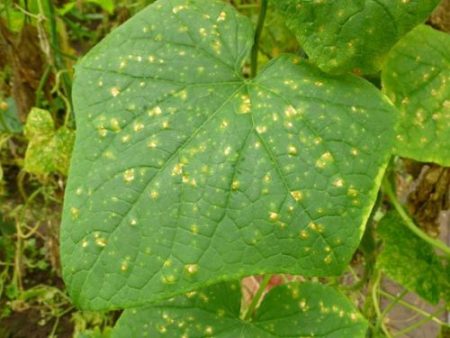
The leaves begin to wrinkle, covered with bright spots.
Cause: crop failure, infected seeds.
Prevention: Choose resistant varieties, pickle seeds, preparing them for planting.
Treatment: removal of damaged leaves.
Take a look: cucumbers in a barrel - growing Ganichkina.
Fusarium wilt
This harmful fungus often often affects precisely greenhouse cucumbers. It manifests itself in wilting lashes, starting from the tops, goes to the root system.
Causes: high humidity, contaminated soil and seeds.
Prevention: healthy seeds, seed dressing, disinfection in a greenhouse soil, pouring with warm water, optimal humidity.
Olive spotting
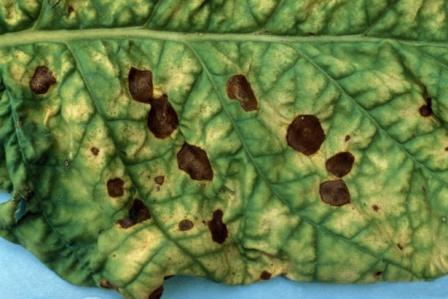
Cladosporiosis is called correctly, the virus appears on the fruits, most abundantly - by the end of summer.
Reasons: high humidity, plus drafts, plus temperature difference at night and day. The leaves are covered with spots similar in color to olive oil, plus the edges of the leaves turn yellow. On the fruits of the ulcer, under the leaves there is a cobweb-like mycelium in fluff.
Prevention: disinfect everything in the greenhouse, all the ropes and trellises that remain from the summer, generally complete disinfection in the fall. During cultivation - avoid temperature jumps, high humidity.
Root rot
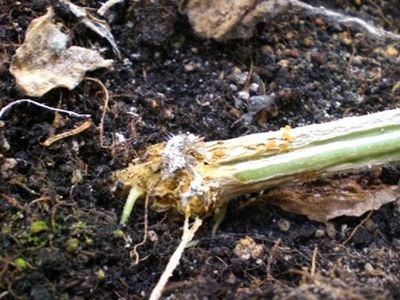
Foliage begins to fade, dry out, roots, if you remove damaged plants, rotten, with a redhead - this is root rot.
Causes: excessive temperatures, low watering, or, even worse, watering with cold water.
Prevention: do not thicken, always observe the crop rotation, and return the cucumbers to their former place no earlier than 4 years later, process them with Previkur.
Treatment: stimulation of the formation of new roots in cucumber lashes. To do this, pour fresh soil at about 5 centimeters under the root, pour warm water around the root.
Anthracnose
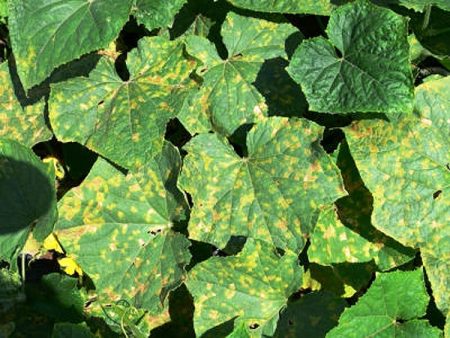
They call it still copperfish, manifested by brown spots, and wet ulcers on the cucumbers.
Reasons: the seeds are infected, the fungus remains in the weed grass left over from the summer, and crop rotation is not observed.
Treatment: 1% Bordeaux mixture, which needs to be sprayed weekly on diseased bushes, copper sulphate (solution 0.5%), dusting with charcoal.
Spider mite
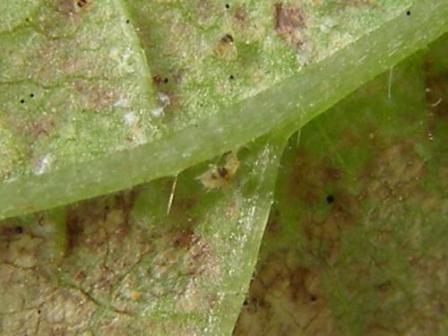
So that this bastard does not damage your plantings, you need to not forget about crop rotation, remove all weeds, and not leave them in the beds, giving housing to the tick and its children, not to thicken the plantings, to monitor humidity.
Tick Fight:
- Plant pin will help a lot if cucumbers are in the greenhouse.
- Actofit - in addition to the greenhouse, helps cucumbers that grow in open ground.
- Etisso is very active, good for greenhouses, actively destroys the tick.
- Fitoverm is a good drug that is actively fighting with ticks, but it is addictive, you need to alternate with others.
Why do leaves turn yellow?
An important question that every gardener often asks himself when trying to find reasons. They can be:
1. lack of potassium - feed the infusion of ash, onion peel;
2. temperature differences - cover the cucumbers at night;
3. Olive mosaic - read above.
See also: when to dig out carrots and beets in the suburbs.

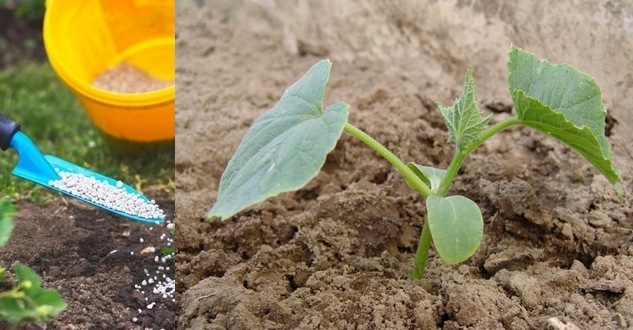
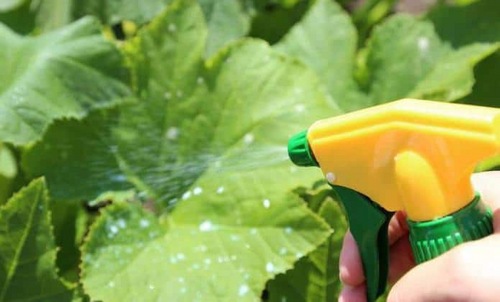
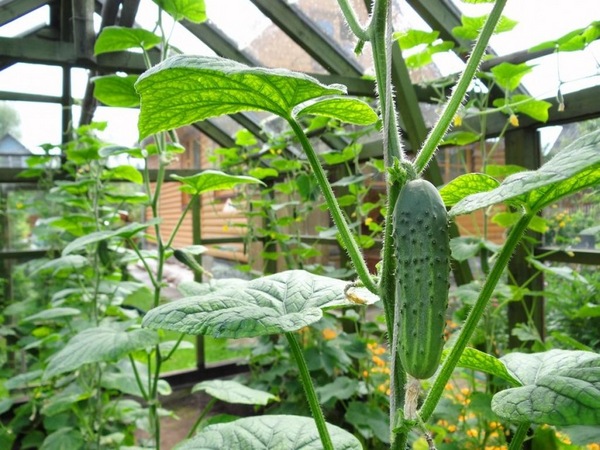
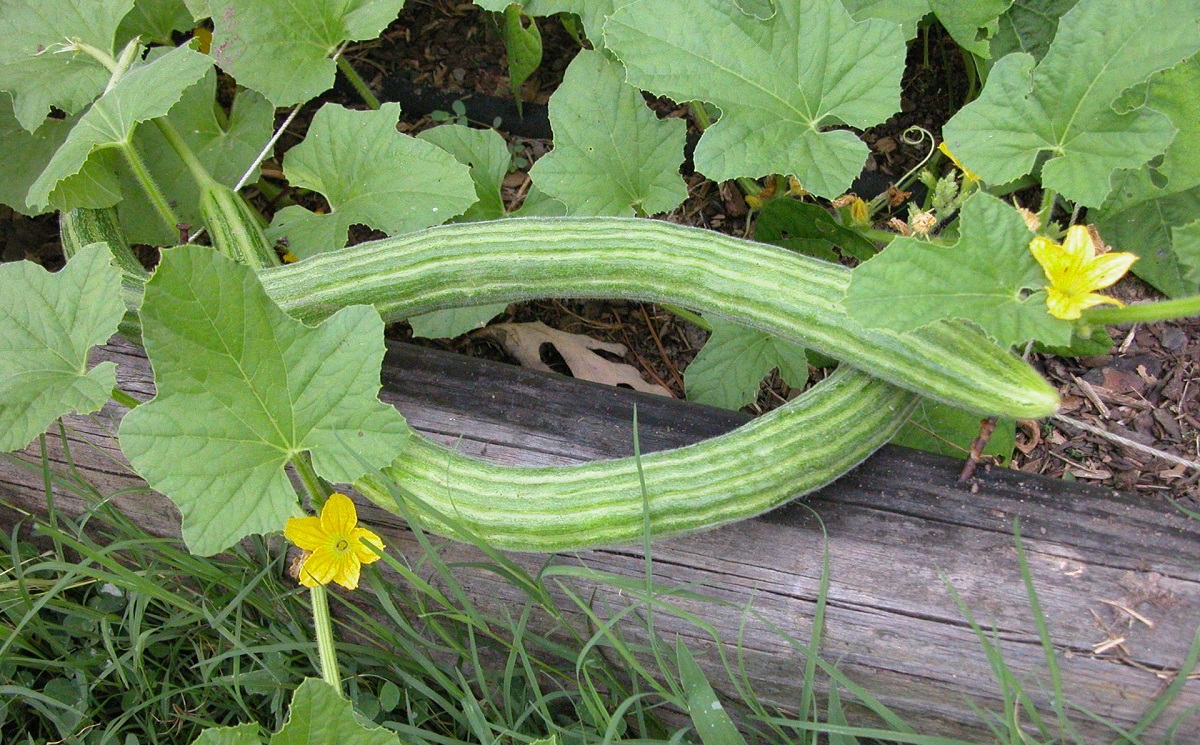 Armenian cucumber with melon flavor: description and characteristics, reviews
Armenian cucumber with melon flavor: description and characteristics, reviews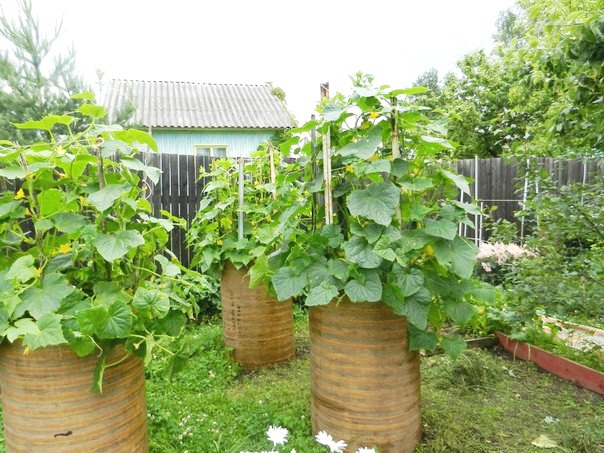 Do-it-yourself vertical beds for cucumbers: schemes, photos
Do-it-yourself vertical beds for cucumbers: schemes, photos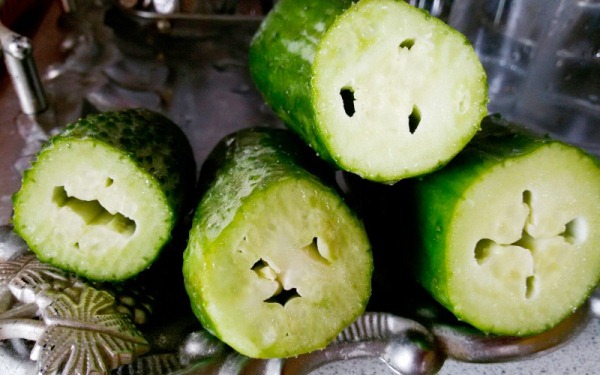 Hollow cucumbers: reasons for the appearance of hollow, what to do
Hollow cucumbers: reasons for the appearance of hollow, what to do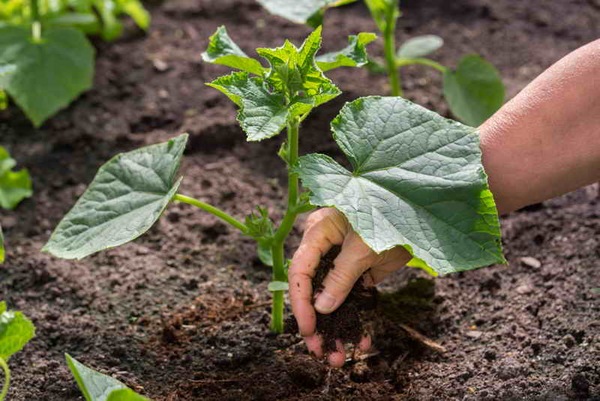 Which manure is best for cucumbers: application, how to breed
Which manure is best for cucumbers: application, how to breed